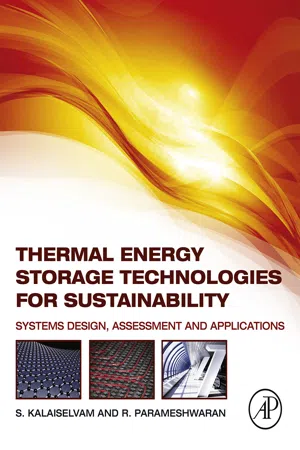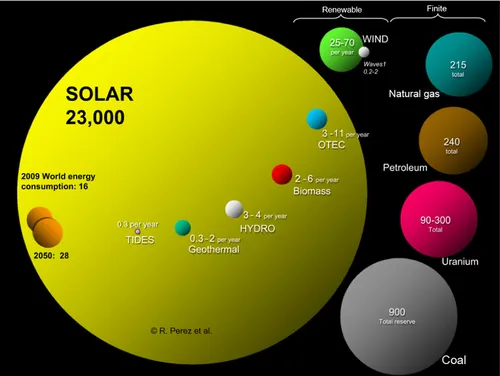
Thermal Energy Storage Technologies for Sustainability
Systems Design, Assessment and Applications
- 444 pages
- English
- ePUB (mobile friendly)
- Available on iOS & Android
Thermal Energy Storage Technologies for Sustainability
Systems Design, Assessment and Applications
About this book
Thermal Energy Storage Technologies for Sustainabilityis a broad-based overview describing the state-of-the-art in latent, sensible, and thermo-chemical energy storage systems and their applications across industries. Beginning with a discussion of the efficiency and conservation advantages of balancing energy demand with production, the book goes on to describe current state-of-the art technologies. Not stopping with description, the authors also discuss design, modeling, and simulation of representative systems, and end with several case studies of systems in use.- Describes how thermal energy storage helps bridge the gap between energy demand and supply, particularly for intermittent power sources like solar, wind, and tidal systems- Provides tables, illustrations, and comparative case studies that show applications of TES systems across industries- Includes a chapter on the rapidly developing field of viable nanotechnology-based thermal energy storage systems
Frequently asked questions
- Essential is ideal for learners and professionals who enjoy exploring a wide range of subjects. Access the Essential Library with 800,000+ trusted titles and best-sellers across business, personal growth, and the humanities. Includes unlimited reading time and Standard Read Aloud voice.
- Complete: Perfect for advanced learners and researchers needing full, unrestricted access. Unlock 1.4M+ books across hundreds of subjects, including academic and specialized titles. The Complete Plan also includes advanced features like Premium Read Aloud and Research Assistant.
Please note we cannot support devices running on iOS 13 and Android 7 or earlier. Learn more about using the app.
Information
Energy and Energy Management
Abstract
1.1 Introduction
1.2 Energy Resources, Energy Sources, and Energy Production

Table of contents
- Cover image
- Title page
- Table of Contents
- Copyright
- Acknowledgments
- Preface
- Chapter 1: Energy and Energy Management
- Chapter 2: Energy Storage
- Chapter 3: Thermal Energy Storage Technologies
- Chapter 4: Sensible Thermal Energy Storage
- Chapter 5: Latent Thermal Energy Storage
- Chapter 6: Thermochemical Energy Storage
- Chapter 7: Seasonal Thermal Energy Storage
- Chapter 8: Nanotechnology in Thermal Energy Storage
- Chapter 9: Sustainable Thermal Energy Storage
- Chapter 10: Thermal Energy Storage Systems Design
- Chapter 11: Review on the Modeling and Simulation of Thermal Energy Storage Systems
- Chapter 12: Assessment of Thermal Energy Storage Systems
- Chapter 13: Control and Optimization of Thermal Energy Storage Systems
- Chapter 14: Economic and Societal Prospects of Thermal Energy Storage Technologies
- Chapter 15: Applications of Thermal Energy Storage Systems
- Appendix I: Units and Conversions Factors
- Appendix II: Thermal Properties of Various Heat Storage Materials
- Appendix III: Rules of Thumb for Thermal Energy Storage Systems Design
- Appendix IV: Parametric and Cost Comparison of Thermal Storage Technologies
- Appendix V: Summary of Thermal Energy Storage Systems Installation
- Abbreviations
- Glossary
- List of Specific Websites
- Index